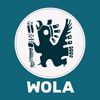 | By Adam Isacson Senior Associate for Regional Security Policy Washington Office on Latin America |
Other Ways To Read This Report
Español
Printer-friendly PDF in English
PDF imprimible en español
On the WOLA website
This May, Colombia’s largest guerrilla group, the Revolutionary Armed Forces of Colombia (FARC), will be 50 years old. Of all armed conflicts in the world that claim 1,000 or more lives a year, the one in Latin America’s third most populous country is the oldest.
In 2012, the Colombian government and the FARC began their fourth attempt to negotiate an end to the fighting. This time, the talks are beginning to stick: negotiators in Havana, Cuba have gotten significantly further than ever before. It is not unreasonable to expect an accord by the end of 2014.
The Havana talks have an agenda covering five substantive topics or political reforms, plus a discussion of how to operationalize what has been agreed. As of April 2014, after 22 ten-day rounds of talks, negotiators have reached agreement on two of these five substantive topics, and are nearing accord on a third.
Where the FARC Talks Stand (as of April 2014)
The negotiators’ agenda includes five substantive items, and one operational item:
✔︎ Integral agricultural development policy (land tenure and rural development)
✔︎ Political participation (guarantees for the political opposition, including former guerrillas)
❒ End of the conflict (transitional justice, disarmament, demobilization, and reintegration)
❒ Solution to the problem of illicit drugs (drug policy; currently under discussion)
❒ Victims (victims of the conflict)
and
❒ Implementation, verification, and ratification (how to cement peace accord commitments into law, then manage their fulfillment)





